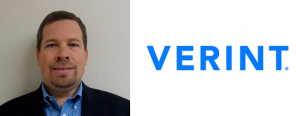ONVIF Newsletter August 2020

Greetings from Per Björkdahl,
Our world and our industry have both experienced an unprecedented change in just a few short months. While the full impact of the COVID-19 pandemic will likely not be felt for months or even years to come, the crisis has upended global travel, the potential for mass gatherings and other aspects of our lives that we rely on to collaborate, communicate and socialize. Instead, our virtual world has expanded, with most of our interactions taking place via a wide selection of platforms: Zoom, Teams, GoToMeeting, WebEx, Zoho, Blue Jeans – the list goes on and on. While these online tools won’t ever completely replace our face to face interactions, they allow us to remain connected and enable us to carry on in our work and personal lives with a modicum of normalcy.
In this era of expansion, ONVIF is excited to announce that it too has added a new platform on which future collaboration and communication will occur – GitHub, an online open source development platform. While it won’t be hosting our video calls, we will instead use it for something much more substantive – to support our use of open source development as an additional methodology of developing and furthering our network interface specifications. What does this mean? While ONVIF interoperability specifications have always been publicly available for use, this will now enable other companies, developers from different industries such as IoT, cloud services and other ancillary technology disciplines to provide their input, perspectives and ideas into the development of future versions of the specifications.
Much like the use of WebEx and GoToMeeting before the pandemic, our use of GitHub, and the extension of open source as a method of specification engineering, is driven primarily out of efficiency. While it may not sound terribly exciting, developing technical specifications is very detailed, process-oriented work, requiring the manipulation of many technical documents to ensure their accuracy and completeness. This job has fallen solely on the volunteers from member companies. With GitHub, which is designed specifically for this purpose, many of these administrative tasks are automated and will no doubt streamline and accelerate our development processes.
We are excited about this development and optimistic that it will only serve to improve the contribution of ONVIF to the technology community at large. You can read more about this new initiative in our press release and FAQ.
Kind regards,
Per Björkdahl
Chairman, ONVIF Steering Committee
![]()
News
Calling All Developers!
ONVIF announced in July that it will use GitHub, an online open source development platform, to support the open source development of its network interface specifications. This will not only make specification contributions easier and more efficient by streamlining the administrative and collaborative process, but it will also open the process to a wider community of developers who wish to contribute to ONVIF.
Developers who wish to get involved need only to be a registered user of GitHub and be willing to accept the ONVIF Contributor License and the Apache license conditions, which ensure that contributions can be jointly developed and that the contributor grants a patent license. On GitHub, the ONVIF schema files and related documents will be accessible, and anyone may copy and distribute the files, make/propose changes to copies of the files and submit the change requests to ONVIF.
ONVIF expects to support network interface specification development on GitHub by Q3 this year.
For more details on the move to open source, please visit onvif.org to view our press release and our FAQ.
![]()
ONVIF Publishes Release Candidate for Profile D
The draft specification of the ONVIF Profile D Release Candidate, which covers interfaces for access control peripherals, is now published for ONVIF members. This newest profile candidate is designed to provide ONVIF interoperability for peripheral devices such as locks, credential/biometric readers, PIN-pads, license plate recognition cameras, door phones, sensors and displays.
Using Profile D, a peripheral device can pass credential identifiers to a securely located Profile D conformant client, such as an access control unit or management software. The client or controller, which stores access rules, schedules and credentials, can then take the access decision and send a command back to the peripheral device to grant or deny access, display a message or request additional input such as a PIN code. Having sensitive information on a separate controller in a secured area enhances security. Communications between the device and client are secured using ONVIF security protocols such as TLS.
The Profile D specification enables a conformant client to configure a conformant device with the necessary data such as which door and access point the device is responsible for, as well as configure a list of allowed or blocked credential identifiers in a device that supports this capability.
Profile D can be combined with video profiles such as Profile T. Devices that can support Profile D and T include a door phone that combines a reader and lock with audio/video intercom, or an IP camera with a relay output connected to a lock that can be used by a guard to visually identify a visitor and remotely unlock the door.
Profile D, together with access management profiles like Profile A and Profile C, and video profiles like Profile T, will help users build modern and secure IP-based access control systems. It will allow for the integration of products from different manufacturers and help further drive the adoption of ONVIF interfaces in the physical access control and video surveillance space.
![]()
ONVIF Member Spotlight: Verint Systems, Inc.
Alex Johnson, Senior Director, Analytics and Strategy, Verint Systems, Inc.

What does Verint do? What services, or products, do you provide?
Verint is a global leader in actionable intelligence solutions with a focus on customer engagement optimization, security intelligence, and fraud, risk and compliance. Today, more than 10,000 organizations in approximately 180 countries—including over 85 percent of the Fortune 100—count on intelligence from Verint solutions to make more informed, effective and timely decisions. From capturing information inside and outside facilities, to conducting investigations and monitoring the performance of video systems across an entire network, Verint offers the technology to increase business efficiency and enhance customer service.
How long has Verint been in the physical security market?
For over two decades, we have developed domain expertise and market leadership in the area of customer engagement. Our comprehensive portfolio of actionable intelligence solutions turns structured and unstructured information into insights by leveraging machine learning technology and advanced analytics.
Why did you join ONVIF?
Open standards, such as those set forth by ONVIF, are sometimes pivotal in providing end users with intelligent security solutions in an efficient and cohesive manner. For example, financial institutions are made up of many distinct areas, such as the lobby, teller window, ATM, drive-thru teller and parking lot. Each of these environments must be monitored at all times given the risk they could present to the safety of the facility, but that might not be easy to achieve with just one or a few traditional devices. These unique utilizations require a solution tailored to the particular setting, and open standards allow financial institutions to choose a camera that best suits the application rather than being locked into a single-manufacturer agreement, which might not address all of these needs. While we pride ourselves in our expertise in the financial market, we understand that flexibility is a key differentiator.
To which specific profiles does your company’s products conform, and why is that beneficial to your business?
We use Profile S today. The value is that our solution works with a wide range of cameras that support the ONVIF profile, allowing customers the ability to choose the most appropriate camera for their specific use case. Providing this level of flexibility to our end users is an important value proposition, in that it shows we are dedicated to tailoring solutions to their unique needs. No two deployments are truly the same, and as such, that customizability is paramount.
What does it mean to you to be a member of ONVIF and what kinds of business impacts have you seen as a result?
Verint sees a lot of value from ONVIF in that it gives our customers the maximum amount of flexibility to choose whatever solution that they would like, while minimizing the expense of camera integration costs. With ONVIF, we are able to ensure that our customers can easily get their cameras working within our system, maximizing customer satisfaction.
![]()
Expanding Social Media Presence with Knowledge Sharing
ONVIF has added two new knowledge-sharing platforms to its online presence as a way to participate in conversations on topics that affect the broader technology markets. On Medium, a global online platform for reading, sharing and exchanging ideas on a wide variety of topics, you will find the ONVIF perspective on issues such as cloud, interoperability and Safe Cities. Similarly, users on the Chinese-language platform Zhihu, the largest knowledge-sharing platform in China, will find articles on technology and other content on interoperability as part of its professional knowledge base.
Please consider following and engaging with ONVIF on these social media channels.
Additionally, ONVIF has a vibrant social media presence, including daily updates on Facebook, Twitter and LinkedIn, and on our ONVIF blog, which is updated weekly with insights into industry hot topics and trends, as well as member news and general organizational information. If you’re interested in participating in one of our ONVIF Member Roundtable blogs, or would like to participate in an ONVIF member profile, please email rpeck@eclipsemediagroup.net.
![]()